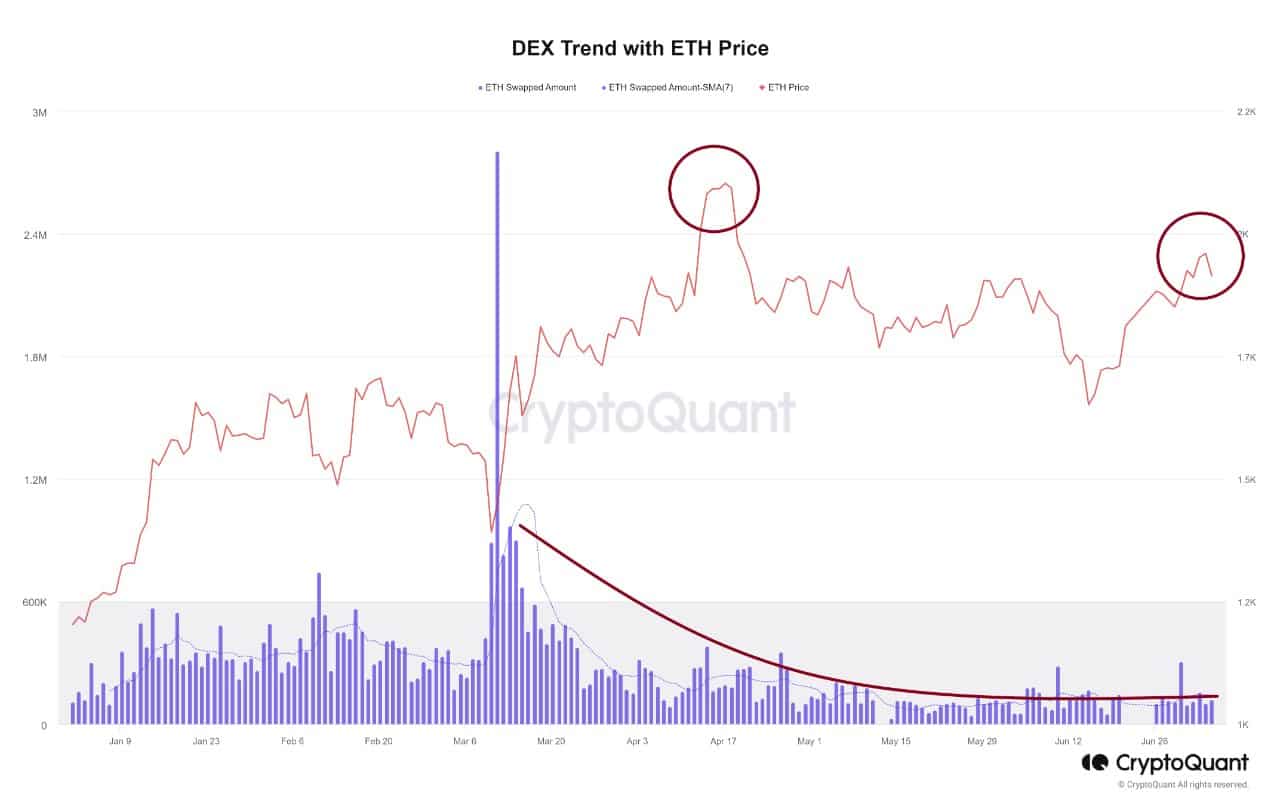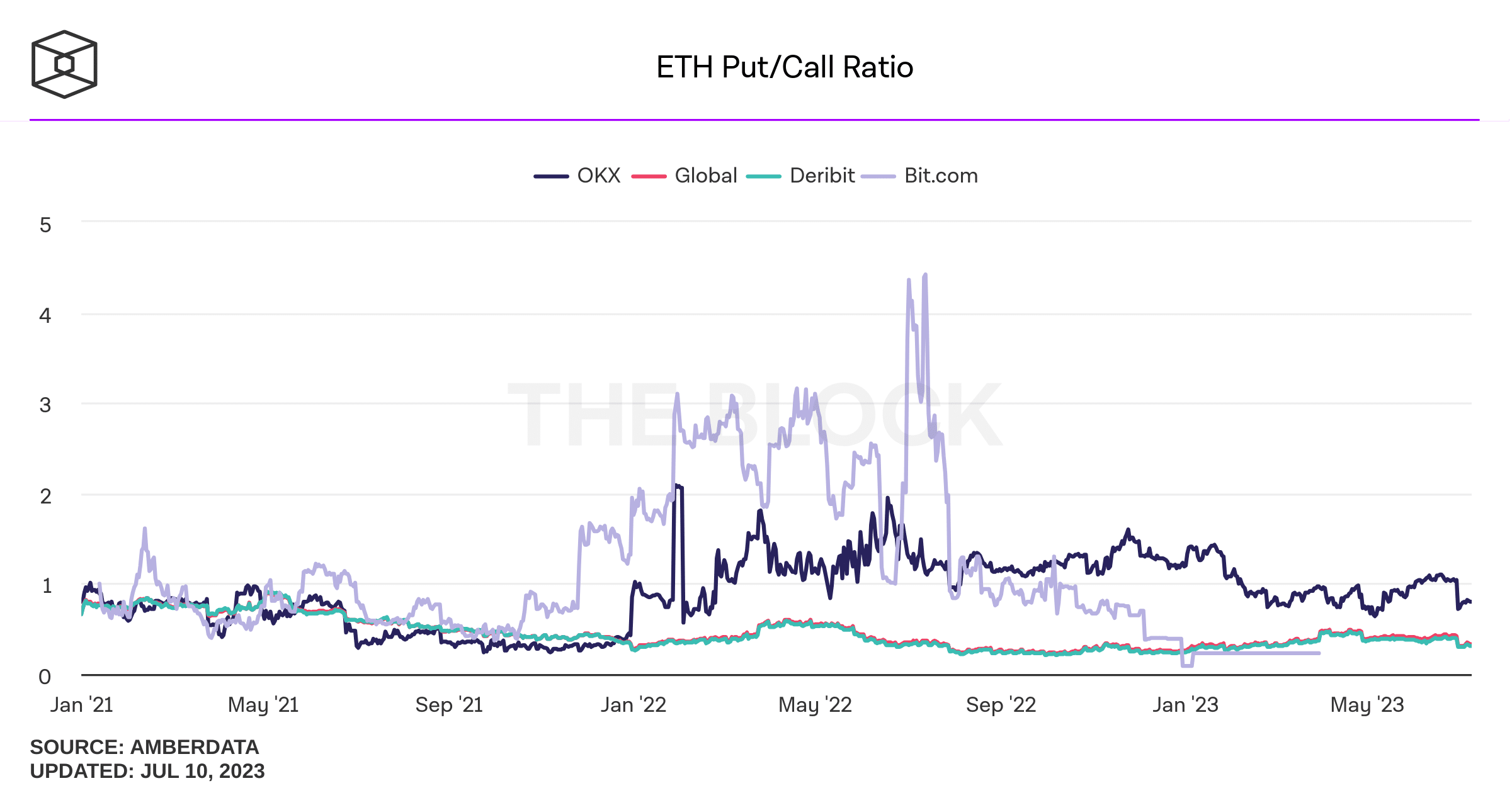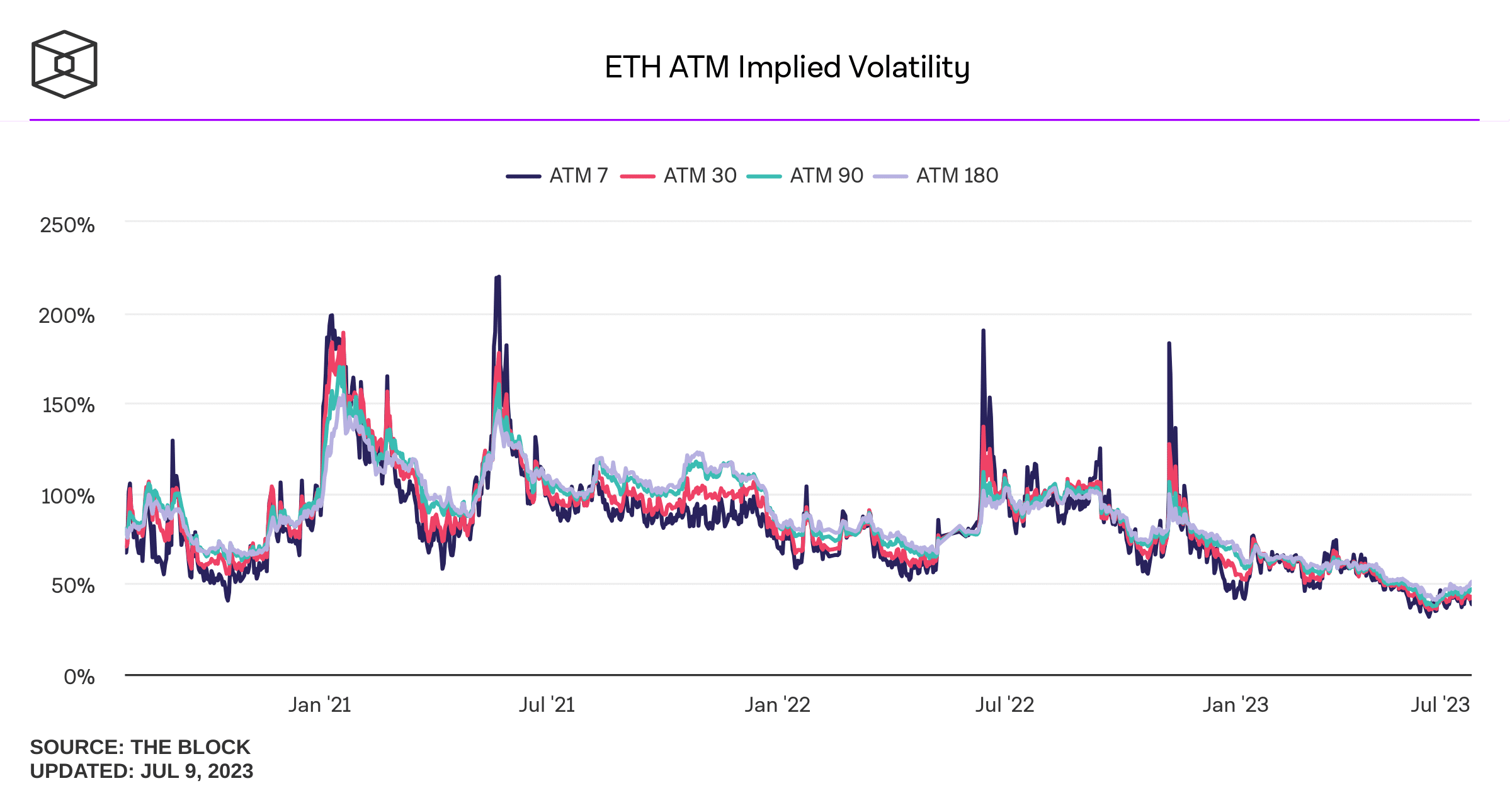- The Ethereum market has exhibited significant volatility, which has led traders to face the task of accurately assessing price movements.
- The trading volume on decentralized exchanges (DEX) for Ethereum shows a notable correlation with the cryptocurrency’s price movements.
- Traders are still positive about ETH. The decreasing put-to-call ratio for Ethereum confirms this.
There is observed correlation between DEX volumes and ETH price; What are traders targeting for ETH price?
DEX Volumes Correlating with ETH Price
In recent months, the Ethereum market has exhibited significant volatility, which has led traders to face the task of accurately assessing price movements. This challenge has become even more complex with ongoing developments and new updates on the Ethereum network.
Recent data provided by CryptoQuant reveals an interesting observation: the trading volume on decentralized exchanges (DEX) for Ethereum shows a notable correlation with the cryptocurrency’s price movements. This correlation highlights the potential usability of DEX volumes as an additional indicator for traders to evaluate the future direction of Ethereum’s price and provides valuable information.
Since January, the volume of ETH transactions carried out on DEX platforms has consistently increased. Particularly in March, during the period when the SEC imposed sanctions on centralized exchanges, the trading volume on DEX reached its peak, accompanying the increase in ETH’s price.
However, there has been a continuous decline in DEX volumes since then. This decline in DEX volumes can be considered as a bearish signal. However, although there is a correlation between the trading volume on DEX and ETH’s price, it does not imply a direct causality. The price of ETH will be subject to other factors that will determine its future.
How are traders reacting?
Despite these factors, traders are still positive about ETH. The decreasing put-to-call ratio for Ethereum confirms this. A decreasing put-to-call ratio indicates a decrease in the number of traders taking bearish positions against ETH.
The put-to-call ratio is a measure used to evaluate the activity of option trades, comparing the number of put options (short) to call options (long) being traded. If the put-to-call ratio is low, it indicates a decrease in the number of traders taking bearish positions against ETH.
Additionally, another reason for the bullish sentiment exhibited by traders may be the decreasing Implied Volatility. When Implied Volatility decreases, market participants expect less uncertainty or lower potential price fluctuations in the future. Traders and investors may interpret low Implied Volatility as a signal of decreased risk or a less volatile market.



